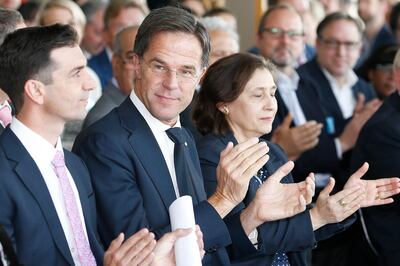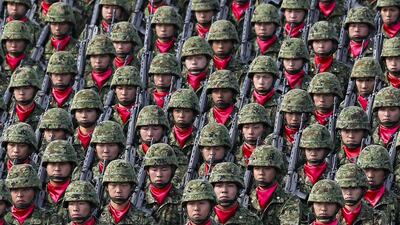In the global jungle, is it possible for anyone but the biggest beasts to command all that is within sight – and most of what is not? Do middle powers even matter in a world in which the US is steadily undermining the international institutions it helped build and in which China is in the ascendant?
The issue was partly addressed in Canada's recent election campaign – if only by leaving it largely unaddressed. International issues such as climate change and migration were raised but Canada's larger foreign policy challenge – that of relevance – was not. Stefanie von Hlatky, an associate political studies professor at Canada's Queen's University, noted towards the end of the campaign: "It's hard out there for a middle power. Even the most creative foreign policy ideas that candidates could propose might sound like magical thinking in the age of Trump."
So does middle-power status now really mean a profound and debilitating lack of power? Not really. Collectively, middle powers do have influence. Taken together, for example, Japan, Germany, the UK, France, Canada, South Korea and Australia account for more than one-fifth of the global economy. They are also important trading nations. This is a good reason to pay attention to both the theory and practice of middle-power status. More broadly though, middle powers have an urgent and compelling shared interest in maintaining a world order with rules that respect their economic and security interests and protect them from the whims of great powers.
Historically, a middle power was first defined in the 16th century by Giovanni Botero, a mayor of Milan. The system of European states was crystallising and Botero created categories: grandissime, mezzano, piccioli – or empire, middle power, small power. To be a mezzano, a state had to be considered capable of standing on its own without help from others.
In real terms, a middle power is not about being mid-sized; the term is not a reference to geographical area or even GDP. A generally accepted definition of a middle power comes from a 2012 thesis by a King’s College London PhD candidate. It says a middle power is "a state actor which has limited influence on deciding the distribution of power in a given regional system, but is capable of deploying a variety of sources of power to change the position of great powers and defend its own position on matters related to national or regional security that directly affect it”.

That is a mouthful, but it is clear that a middle power will not be pushed around. The concept of middle powers featured in diplomatic debates at the peace settlement of the Napoleonic Wars in 1815 and in the early stages of the establishment of the United Nations after the Second World War. At the time, Canadian prime minister Mackenzie King suggested that "middlepowerhood" could secure the international influence of countries like his. Australia’s foreign minister raised this idea as well. Ever since, middle-power status has been considered a trademark of both countries’ foreign policy.
But in the years since Donald Trump’s election to the US presidency, middle powers have been faced with a greater responsibility than simply managing their own interests. They now need to protect the very rules-based order within which they have flourished for more than 70 years.
They have taken up the task relatively seriously – at least in terms of rhetorical intent.
Earlier this month, Dutch prime minister Mark Rutte told the Sydney-headquartered Lowy Institute think-tank that middle powers such as Australia and the Netherlands must work together "to influence and shape international debate". If not, he said, "a world in which might makes right is never far away". As an example of the "direct and tragic" real-world ramifications of a breakdown of "the international rules-based order", Mr Rutte cited the shooting down of Malaysia Airlines flight in July 2014 over eastern Ukraine. It claimed 298 lives, including 193 Dutch citizens and 27 Australians. What he clearly meant was the difficulty of bringing anyone to account for downing the aircraft.
There have been other significant declarations of intent by middle powers. Earlier this year, the Franco-German proposal for an “alliance for multilateralism”, Shinzo Abe’s promise that Japan would “preserve and continue the free, open, and rules-based international order”, and Canadian foreign minister Chrystia Freeland’s insistence on “doubling down on an improved rules-based international order”. A little further back in time, there was former UK prime minister Theresa May’s promise that “a new, global Britain” would energetically defend “the rules-based international system on which the stability of our world continues to rely” and India’s chief career diplomat Vijay Gokhale’s call to “strengthen multilateralism” by pushing back against unilateral efforts to undo the “established international mechanisms governing the global commons”.
Aside from talk, however, have middle powers managed to accomplish anything in the past few years? Three limited successes are worth noting.
From October 2018, Canada has convened what it calls a “working group of like-minded nations” to reform the World Trade Organisation, not least its slow dispute resolution system. Second, after US President Donald Trump withdrew from the 12-country Trans-Pacific Partnership, Japan urged the remaining members to continue without the deal’s principal and biggest sponsor. A renamed agreement – covering about 13 per cent of the global economy – was launched. Significantly, it is still open to the US – as indeed to other interested countries such as South Korea, Colombia, Indonesia, Thailand and the UK – thereby holding out the prospect of creating a multi-regional global economic trading zone in the future. Third, the Paris climate change pact did not collapse – despite the US withdrawal – because middle powers reaffirmed their commitment. They also enlarged the sphere of co-operation to include regional government leaders, such as the California governor, to show the strength of the effort on the ground.
Perhaps middle powers now matter even more than empires.


